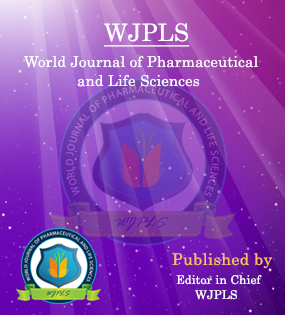Abstract
PRE-CLINICAL DIABETIC CARDIOMYOPATHY: PREVALENCE, SCREENING AND OUTCOME-A PROSPECTIVE STUDY AT TERTIARY LEVEL HOSPITAL IN NORTH INDIA.
Premshanker Singh*, P. K. Singh
ABSTRACT
Left ventricular function was assessed in preclinical diabetic cardiomyopathy without significant microangiopathy. The results were compared with those in normal controls. Significant microangiopathy was defined as proteinuria over 3 g/24 h or proliferative retinopathy. Left ventricular function was also assessed one and a half years later by echocardiography in four patients with microangiopathy. Patients with angina, previous myocardial infarction, hypertension, and alcoholism were excluded. All had normal electrocardiograms and chest radiographs. Diabetics with microangiopathy had impaired left ventricular function, whereas those with uncomplicated diabetes had normal function. This finding supports the existence of a specific diabetic cardiomyopathy due to microangiopathy rather than the metabolic defect. The association of microangiopathy and impaired left ventricular function may explain the high immediate mortality and the high incidence of cardiogenic shock and congestive heart failure after myocardial infarction in diabeticDiabetic cardiomyopathy, characterized by left ventricular (LV) dysfunction and LV hypertrophy could contribute to the increased life-time risk of congestive heart failure seen in patients with diabetes. We assessed prospectively the prevalence, effectiveness of screening methods [brain natriuretic peptide (BNP) and C-reactive protein in combination with clinical parameters], and outcome of pre-clinical diabetic cardiomyopathyWe studied 99 adults (mean age 57.4 ± 10.2 years, 44% females) with diabetes and no previous evidence of structural heart disease. By echocardiography, diabetic cardiomyopathy was present in 48% of patients. Screening with combinations of clinical parameters (gender, systolic blood pressure, and body mass index), but not BNP, resulted in high negative predictive values for diabetic cardiomyopathy. During a mean follow-up of 48.5 ± 9.0 months, in the groups with and without diabetic cardiomyopathy, 12.5 vs. 3.9% (P < 0.2) patients died or experienced cardiovascular events and 37.5 vs. 9.6% (P < 0.002) had a deterioration in NYHA functional class. Overall event-free survival was 54 vs. 87% (P = 0.001) in the groups with and without diabetic cardiomyopathy, respectively. Brain natriuretic peptide was an independent predictor of events [odds ratio 3.5 (1.1–10.9), P = 0.02].Pre-clinical diabetic cardiomyopathy is common. Screening with combinations of simple clinical parameters, but not BNP, can be useful to identify those patients needing further evaluation. Patients with pre-clinical diabetic cardiomyopathy are at increased risk for functional deterioration and possibly cardiovascular events during follow-up.
[Full Text Article] [Download Certificate]WJPLS CITATION 
| All | Since 2020 | |
| Citation | 590 | 424 |
| h-index | 12 | 10 |
| i10-index | 17 | 14 |
INDEXING
NEWS & UPDATION
BEST ARTICLE AWARDS
World Journal of Pharmaceutical and life sciences is giving Best Article Award in every Issue for Best Article and Issue Certificate of Appreciation to the Authors to promote research activity of scholar.
Best Article of current issue
Download Article : Click here





